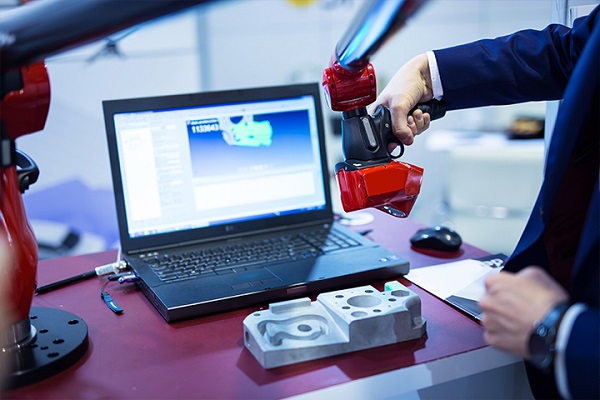3D scanners have become powerful tools for aerospace, apparel, entertainment, and other industries. India has become one of the emerging countries for an increase in the adoption of 3D scanners.
3D scanners have been of paramount importance for time-saving, security, and product development purposes. Their adoption has been growing significantly over the past few years owing to technological advancements that offer benefits such as high-quality images, portability, and wide scanning range. 3D scanners have become powerful tools for aerospace, apparel, entertainment, and other industries. India has become one of the emerging countries for an increase in the adoption of 3D scanners. Leading companies such as Wipro have implemented these scanners for rapid development of products. The leading aerospace research institute Indian Space Research Organization (ISRO) has been utilizing 3D printing and scanning solutions for manufacturing various parts. Indian airports will utilize 3D scanners to scan bags to increase the speed of security checks. Moreover, 3D scanners are useful to carry out large-scale projects such as preparation of ‘Indian Size’ chart. These applications are expected to augment the growth of the industry. Following are some recent activities in India that outline usefulness of 3D scanning.
Indian airports to be equipped with 3D scanning technology:
A new technology has made its way for scanning bags at airports to change the way in which bags are scanned. Passengers will not need to remove laptops or iPads from bags during the security checks. 3D bag scanners have replaced X-ray scanners to scan bags. This technology would also detect explosives that old machines might have missed. The 3D images of contents in the bag will be offered with the help of new scanners that would be placed at the security checkpoint of the airport. This will provide a more effective way for inspection of bags and other explosives. After the implementation of the technology at Phoenix Sky Harbour International, the U.S., the Central Industrial Security Force (CISF) at Indian airport have been considering its implementation in the country. As the number of travelers has grown significantly, the issue of long queues at peak hours needs to be resolved. This scanner would significantly help in solving the issue without compromising safety and security.
3D whole-body scanner for ‘India Size’ survey:
To conduct a survey mandated by the Union Ministry of Textiles (MoT), National Institute of Fashion Technology (NIFT), India would employ three 3D whole-body scanners. The aim of the survey is to produce India’s own size chart for assisting the apparel industry to manufacture products based on Indian body types. The scanners will collect the data and information regarding sizes of Indian body types. Anthropometric data will be collected from various regions of the country. As no Indian manufacturer have heavy duty machinery that will help in this project, NIFT is looking for the global tender.
These 3D scanners will be kept at three different public locations in the six cities. Samples from males and females aged between 15 and 65 years will be collected. There will be hundreds of measurements taken from the scanners and nearly 120 different anthropometric aspects will be considered. The scanning procedure will be safe for a person with a body suit. As the U.S. and the U.K. sizes are used in India, this ‘India size’ chart will help apparel manufacturers and retailers to view it as a reference for producing the garments.
The 3D scanning industry in India is experiencing a boom owing to the rise in awareness about the significance of the technology in various applications to save time and improve efficiency. According to the research firm Allied Market Research, the global 3D scanning market is expected to reach $53.34 billion by 2025. The 3D scanners have been utilized for numerous industrial applications and their implementation is expected to increase in the future.
Bylined article by: Pratik Kirve
Pratik Kirve is a writer, blogger, and sport enthusiast. He holds a bachelor degree in Electronics and Telecommunication Engineering and currently working as a Content Writer at Allied Market Research. He has avid interest in writing news articles across different verticals. When he is not following updates and trends, he spends his time reading, writing poetry, and playing football.








